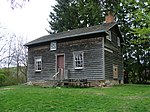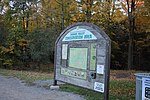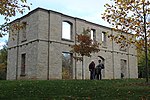Hamilton Golf and Country Club
Hamilton Golf and Country Club is located in Ancaster, Ontario. The club began in 1894. Renowned English golf architect Harry Colt designed 18 of the current 27 holes in 1914, with Canadian golf architect Robbie Robinson adding a third nine in 1974. The course has a short course and a driving range. The club has hosted six Canadian Opens, the last being in June 2019. The course was lengthened and renovated in the late 1990s, in preparation for the recent Opens. The current Chedoke Golf Club, now a municipal course, was the second location of the Hamilton Golf and Country Club, with the original being on the corner of Barton and Ottawa streets. Hamilton Golf and Country Club has been long regarded as one of the top golf courses in Canada, currently ranking second on Canada's list of best golf courses by ScoreGolf magazine and recently number 98 in Golf Digest's Top 100 Courses in the World. Course record- Brandt Snedeker. 10 under par 60 shot June 7. 2019.
Excerpt from the Wikipedia article Hamilton Golf and Country Club (License: CC BY-SA 3.0, Authors).Hamilton Golf and Country Club
Ravina Crescent, Hamilton
Geographical coordinates (GPS) Address External links Nearby Places Show on map
Geographical coordinates (GPS)
| Latitude | Longitude |
|---|---|
| N 43.217 ° | E -79.975 ° |
Address
Hamilton Golf & Country Club
Ravina Crescent
L9G 1R8 Hamilton
Ontario, Canada
Open on Google Maps






